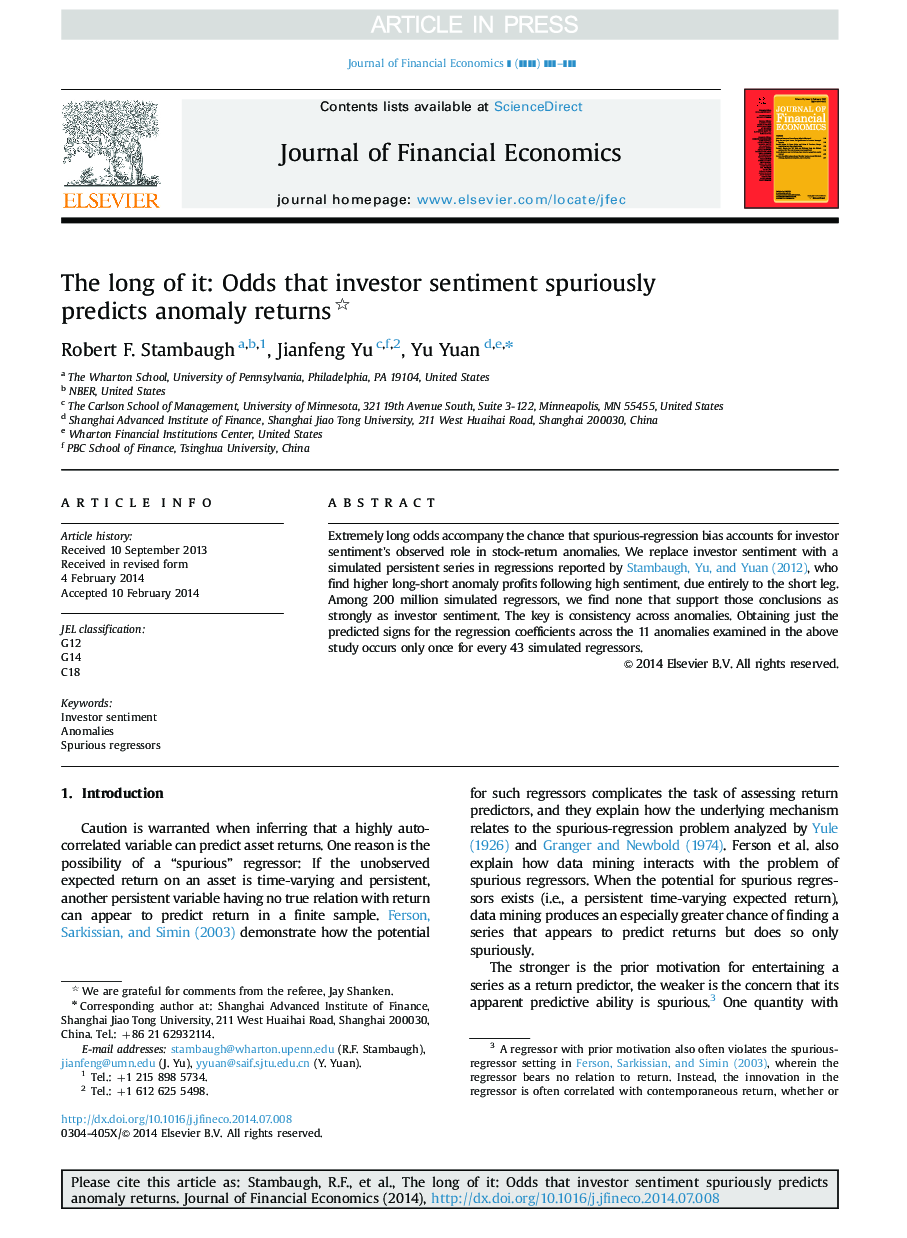| Article ID | Journal | Published Year | Pages | File Type |
|---|---|---|---|---|
| 10475805 | Journal of Financial Economics | 2014 | 7 Pages |
Abstract
Extremely long odds accompany the chance that spurious-regression bias accounts for investor sentiment׳s observed role in stock-return anomalies. We replace investor sentiment with a simulated persistent series in regressions reported by Stambaugh, Yu, and Yuan (2012), who find higher long-short anomaly profits following high sentiment, due entirely to the short leg. Among 200 million simulated regressors, we find none that support those conclusions as strongly as investor sentiment. The key is consistency across anomalies. Obtaining just the predicted signs for the regression coefficients across the 11 anomalies examined in the above study occurs only once for every 43 simulated regressors.
Keywords
Related Topics
Social Sciences and Humanities
Business, Management and Accounting
Accounting
Authors
Robert F. Stambaugh, Jianfeng Yu, Yu Yuan,
